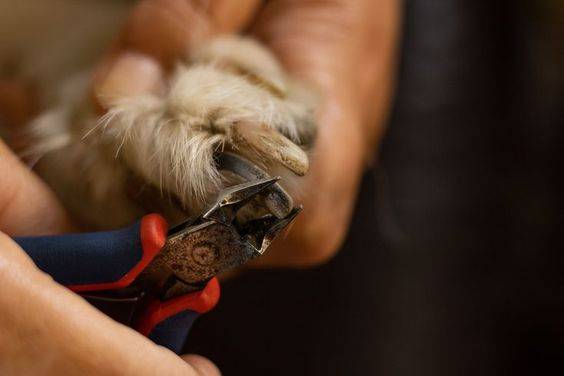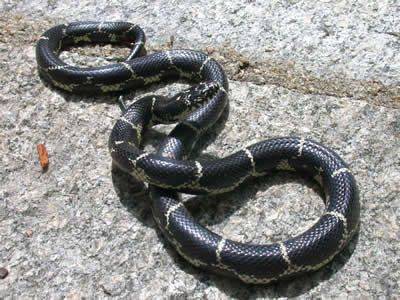Welcome to The Pet Diary, your go-to destination for all things related to our beloved furry friends. In this comprehensive guide, we delve deep into the world of dog breeds often labeled as the Most Dangerous Dog Breeds. From debunking myths to understanding the factors contributing to a breed’s perceived danger, we leave no stone unturned. Join us on this enlightening journey as we explore the truth behind the reputation of these breeds and provide insights into responsible pet ownership practices.
Understanding the Perception of Most Dangerous Dog Breeds
Before delving into specific breeds, it’s crucial to understand how the perception of a most dangerous dog breeds is formed. Various factors contribute to this perception, including media portrayal, breed-specific legislation, and anecdotal evidence. However, it’s essential to recognize that no breed is inherently dangerous. Instead, individual dogs’ behavior is influenced by genetics, upbringing, training, and socialization.
Factors Contributing to Perceived Danger
Size and Strength:
Large and powerful breeds often top the list of perceived most dangerous dog breeds. Breeds like Pit Bulls, Rottweilers, and Mastiffs possess significant strength, which can be intimidating. However, it’s important to remember that size alone does not dictate a dog’s behavior.
Temperament:
A dog’s temperament plays a significant role in how it interacts with humans and other animals. Breeds with a history of aggression, such as the Akita and Chow Chow, may be perceived as more dangerous. However, it’s essential to consider that individual temperament varies within each breed.
Training and Socialization:
Training your dog effectively and ensuring they are properly socialized play pivotal roles in molding their behavior.Dogs that lack adequate training or have been subjected to negative experiences may exhibit aggressive tendencies, regardless of their breed. Conversely, well-trained and socialized dogs are more likely to behave positively in various situations.
Breed-Specific Legislation (BSL):
Breed-specific legislation targets certain breeds deemed dangerous, imposing restrictions or outright bans on ownership. While proponents argue that BSL helps prevent dog attacks, critics argue that it unfairly targets specific breeds and fails to address the root causes of irresponsible ownership and dog-related incidents.
Debunking Myths and Misconceptions
In this chapter, we take a closer look at some of the breeds commonly associated with danger and debunk myths surrounding their reputation:
Pit Bull Terrier:
The Pit Bull Terrier, often simply referred to as the Pit Bull, is a breed that evokes strong emotions and opinions. Known for their muscular build, strength, and tenacity, Pit Bulls have a complex and often misunderstood reputation. Beneath their tough exterior, however, lies a loyal, affectionate, and intelligent companion.
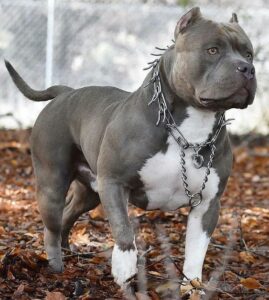
Originally bred for bull-baiting and later as fighting most dangerous dog breeds, Pit Bulls have historically been associated with aggression. However, it’s essential to understand that a dog’s behavior is shaped by various factors, including genetics, upbringing, and environment. Responsible breeding and proper socialization play crucial roles in determining a Pit Bull’s temperament.
Physically, Pit Bulls typically have a medium-sized, muscular build with a broad head and powerful jaws. They come in a variety of colors, including brindle, black, blue, and fawn. Their short coat is simple to upkeep, needing only minimal grooming.
Despite their tough appearance, Pit Bulls are known for their affectionate nature towards humans. They are often referred to as “nanny dogs” for their gentle and protective demeanor towards children. Pit Bulls thrive on human companionship and form strong bonds with their families.
Intelligent and eager to please, Pit Bulls excel in various canine sports and activities, including obedience, agility, and therapy work. Their athleticism and trainability make them versatile companions for active individuals and families.
Unfortunately, Pit Bulls are often subjected to breed-specific legislation and discriminatory policies due to misconceptions about their temperament. However, many advocates and organizations work tirelessly to challenge these stereotypes and promote responsible ownership of Pit Bulls and other breeds.
In the right hands, Pit Bulls can be loving, loyal, and well-behaved members of the family. With proper training, socialization, and care, Pit Bulls thrive in loving homes where they are treated with kindness and respect. It’s essential to judge each dog as an individual, rather than stereotyping based on breed alone.
Overall, Pit Bulls are much more than their reputation suggests. They are devoted companions who bring joy, laughter, and unconditional love to countless families around the world.
Rottweiler:
The Rottweiler is a robust and most dangerous dog breeds known for its strength, loyalty, and protective instincts. Originating from Germany, these dogs were historically used as herding and guarding animals. With a muscular build and a distinctive black and tan coat, Rottweilers have a commanding presence that demands respect.
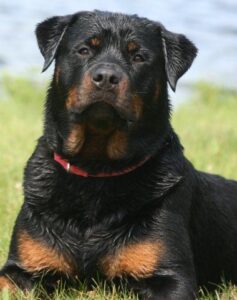
Physically, Rottweilers are large and sturdy dogs with a broad head and strong jaws. Their dense, short coat offers protection from diverse weather conditions. While their appearance may seem imposing, Rottweilers are known for their gentle and affectionate nature towards their families.
Despite their friendly demeanor, Rottweilers are natural protectors and can be wary of strangers. Proper training and socialization from an early age are essential to ensure they develop into well-behaved and confident companions. With consistent guidance and positive reinforcement, Rottweilers can excel in various roles, including family pets, working dogs, and even therapy animals.
Intelligent and loyal, Rottweilers are devoted to their owners and will go to great lengths to protect them if they perceive a threat. However, they also have a playful and affectionate side, enjoying quality time with their families and participating in activities such as obedience training and agility courses.
Despite their many positive qualities, Rottweilers may face stereotypes and misconceptions due to their appearance and historical use as guard dogs. However, responsible ownership and proper training can help dispel these misconceptions and showcase the breed’s true nature as loving and loyal companions.
In conclusion, the Rottweiler is a magnificent breed known for its strength, loyalty, and protective instincts. With proper care and training, these dogs make excellent family pets and companions, bringing joy, love, and companionship to their owners’ lives.
German Shepherd:
The German Shepherd is a highly versatile and intelligent breed known for its loyalty, courage, and versatility. Originating from Germany in the late 19th century, German Shepherds were initially bred as herding dogs but have since become renowned for their work in various roles, including police and military service, search and rescue, therapy work, and as beloved family pets.
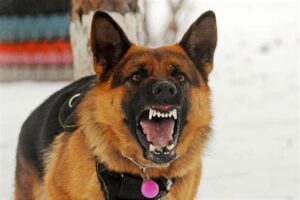
Physically, German Shepherds are medium to large-sized dogs with a strong and muscular build. They have a distinctively noble appearance, with a long, powerful neck, deep chest, and alert, expressive eyes. Their double coat is typically dense and comes in various colors, including black and tan, sable, and solid black.
In terms of temperament, German Shepherds are recognized for their intelligence, loyalty, and protective instincts. They are dedicated to their families and develop strong bonds with their owners. While they can be aloof towards strangers, they are typically friendly and affectionate with those they know. Proper socialization from an early age is essential to ensure they develop into well-adjusted and confident companions.
German Shepherds thrive on mental and physical stimulation and require regular exercise and training to keep them mentally engaged and physically fit. They excel in obedience training and enjoy participating in activities such as agility, tracking, and obedience trials. Their eagerness to learn and please makes them highly trainable and versatile working dogs.
In addition to their working abilities, German Shepherds are known for their gentle and nurturing nature towards children and other pets in the household. They are often referred to as “gentle giants” for their ability to be both protective and affectionate towards their loved ones.
Despite their many positive qualities, German Shepherds may exhibit most dangerous dog breeds behavior issues if not properly trained and socialized. However, with consistent guidance and positive reinforcement, they can become well-behaved and obedient companions.
In summary, the German Shepherd is an exceptional breed renowned for its intelligence, loyalty, and versatility. Whether serving in a professional capacity or as a cherished family pet, German Shepherds bring unwavering devotion, companionship, and joy to the lives of their owners.
Doberman Pinscher:
The Doberman Pinscher is a distinguished and elegant breed known for its loyalty, intelligence, and imposing appearance. Originating in Germany in the late 19th century, Dobermans were initially bred as guard dogs, but they have since become cherished companions and versatile working dogs.

Physically, Doberman Pinschers are medium to large-sized dogs with a sleek and muscular build. They have a square, compact body, long legs, and a proud carriage. Their short coat is typically smooth and comes in various colors, including black, blue, red, and fawn, often with rust-colored markings.
Temperamentally, Doberman Pinschers are known for their intelligence, alertness, and loyalty to their families. They possess high trainability and a keen desire to please, making them ideal candidates for obedience training and a wide range of canine sports and activities. With proper socialization and training, Dobermans are confident and well-behaved companions.
Doberman Pinschers are known for their strong protective instincts and are naturally wary of strangers. However, they are typically friendly and affectionate with their families, forming deep bonds with their owners. While they may appear intimidating, Dobermans are often described as loving and affectionate towards their loved ones.
In addition to their roles as family pets, Doberman Pinschers excel in various working roles, including police and military work, search and rescue, therapy work, and competitive obedience. Their versatility and intelligence make them well-suited for a wide range of tasks, and they thrive on mental and physical stimulation.
Despite their protective nature, Doberman Pinschers require regular exercise and mental stimulation to prevent boredom and potential behavior issues. They enjoy activities such as jogging, hiking, and playing games that challenge their minds and bodies.
While Doberman Pinschers may have a reputation for being aggressive and most dangerous dog breeds, proper breeding, socialization, and training play crucial roles in shaping their temperament. Responsible ownership and positive reinforcement training are essential to ensure they develop into well-adjusted and well-behaved companions.
the Doberman Pinscher is a remarkable breed known for its intelligence, loyalty, and versatility. Whether serving as a devoted family pet or excelling in various working roles, Dobermans bring unwavering loyalty, companionship, and joy to the lives of their owners.
Responsible pet ownership is crucial in preventing dog-related incidents and promoting harmony between dogs and humans. Here are some essential guidelines for responsible pet ownership:
Training and Socialization:
Training and socialization are vital components of nurturing a well-mannered and adaptable dog.Both processes play crucial roles in shaping a dog’s behavior, temperament, and overall social skills. Let’s explore each aspect in detail:
Training:
Training involves teaching a dog specific commands, behaviors, and skills through consistent guidance and positive reinforcement. Training provides mental stimulation for the dog and helps establish a clear communication system between the dog and its owner. Here are some essential aspects of training dogs:
Obedience Training:
Obedience training focuses on teaching basic commands such as sit, stay, come, heel, and down. These commands are essential for effective communication and control over the dog’s behavior in various situations.
Positive Reinforcement:
Positive reinforcement entails rewarding desired behaviors with treats, praise, or play. This method encourages the dog to repeat the behavior, making learning more enjoyable and effective.
Consistency:
Consistency is crucial in dog training. Commands should be given in a clear and consistent manner, and rules should be enforced consistently to avoid confusion.
Patience and Persistence:
Training takes time and patience. Dogs may not learn commands immediately, so it’s essential to remain patient and persistent. Break training sessions into short, frequent sessions to prevent the dog from becoming overwhelmed.
Avoid Punishment:
Training methods that rely on punishment can result in fear, anxiety, and aggression in dogs. Instead, focus on positive reinforcement and reward-based training to build trust and strengthen the bond between you and your dog.
Socialization:
Socialization involves exposing a dog to various people, animals, environments, and experiences in a positive and controlled manner. The goal of socialization is to help the dog develop confidence, adaptability, and appropriate social skills. Here are some key aspects of dog socialization:
Early Exposure:
Socialization should begin during the puppy’s critical developmental period, typically between 3 to 14 weeks of age. During this time, puppies are most receptive to new experiences and are more likely to form positive associations.
Gradual Introduction:
Introduce the puppy to new people, animals, and environments gradually and in a controlled manner. Start with calm, familiar settings before gradually exposing the puppy to more challenging or stimulating environments.
Positive Experiences:
Ensure that socialization experiences are positive and rewarding for the puppy. Use treats, praise, and toys to create positive associations with new people, animals, and situations.
Supervision:
Supervise socialization interactions to ensure the puppy’s safety and prevent negative experiences. Intervene if the puppy becomes overwhelmed or shows signs of fear or aggression.
Continued Socialization:
Socialization should be an ongoing process throughout the dog’s life. Continue exposing the dog to new experiences and environments to maintain its social skills and prevent regression.
By incorporating training and socialization into your dog’s routine, you can help them develop into well-mannered, confident, and well-adjusted companions. Remember to be patient, consistent, and positive in your approach, and always prioritize your dog’s safety and well-being.
Supervision:
Never leave your dog unsupervised, especially around children or unfamiliar individuals. Supervision allows you to intervene promptly in case of any potential conflicts or misbehavior.
Secure Enclosures:
Ensure that your property is securely fenced to prevent your dog from roaming freely. Proper containment reduces the risk of your dog encountering unfamiliar people or animals and helps prevent accidents or escapes.
Veterinary Care:
Schedule regular veterinary check-ups and keep your dog up-to-date on vaccinations and parasite prevention. Address any health or behavior issues promptly to ensure your dog’s well-being.
Responsible Breeding:
If you’re considering adding a dog to your family, research reputable breeders who prioritize health, temperament, and responsible breeding practices. Avoid supporting puppy mills or irresponsible breeders who prioritize profit over the welfare of their dogs.
The perception of most dangerous dog breeds is shaped by various factors, including media portrayal, breed-specific legislation, and misconceptions. While certain breeds may have traits that require careful management and responsible ownership, labeling them as inherently dangerous oversimplifies a complex issue. By understanding the factors contributing to a dog’s behavior and promoting responsible pet ownership practices, we can create safer communities for both humans and canines. Thank you for joining us at The Pet Diary as we advocate for the well-being of all dogs, regardless of their breed.




